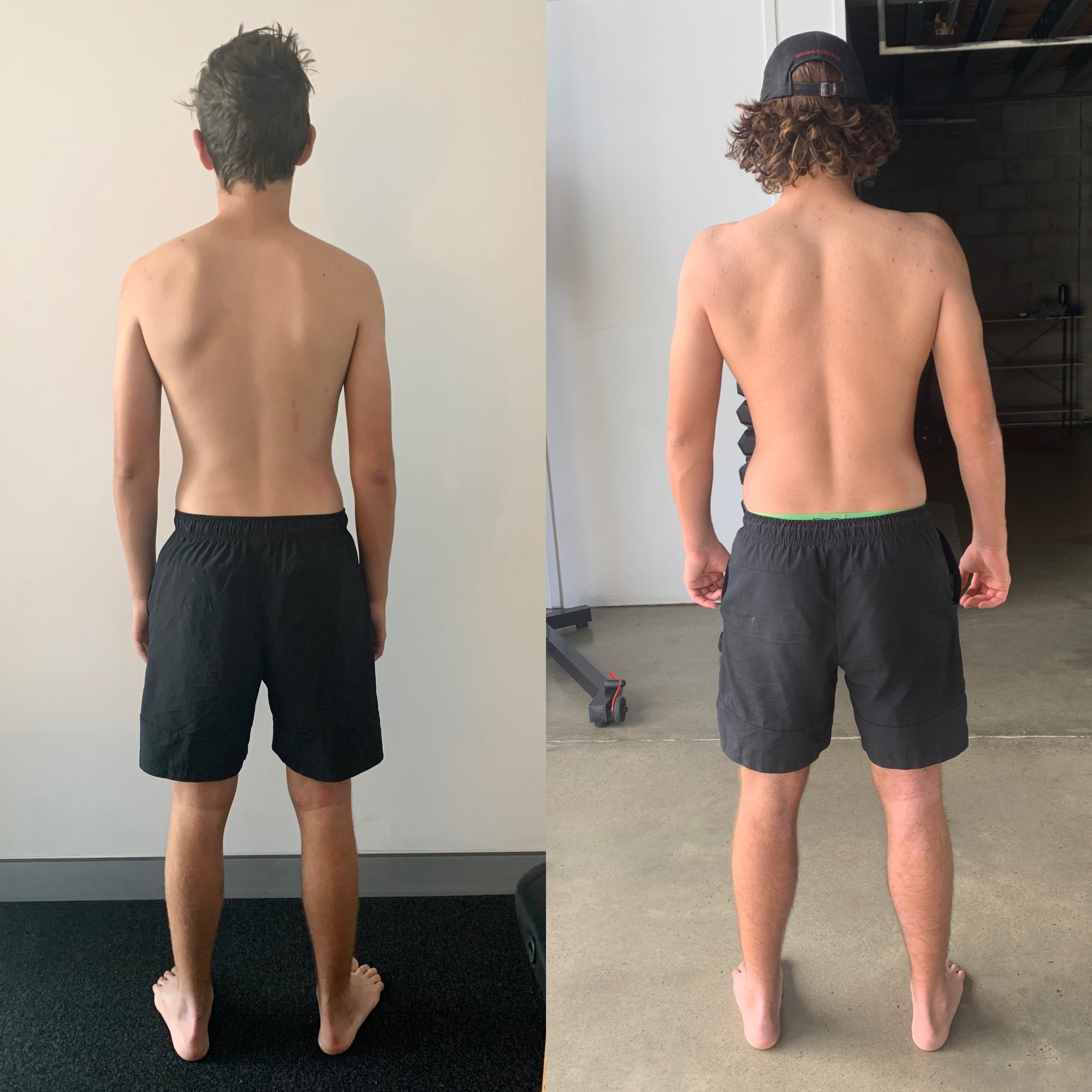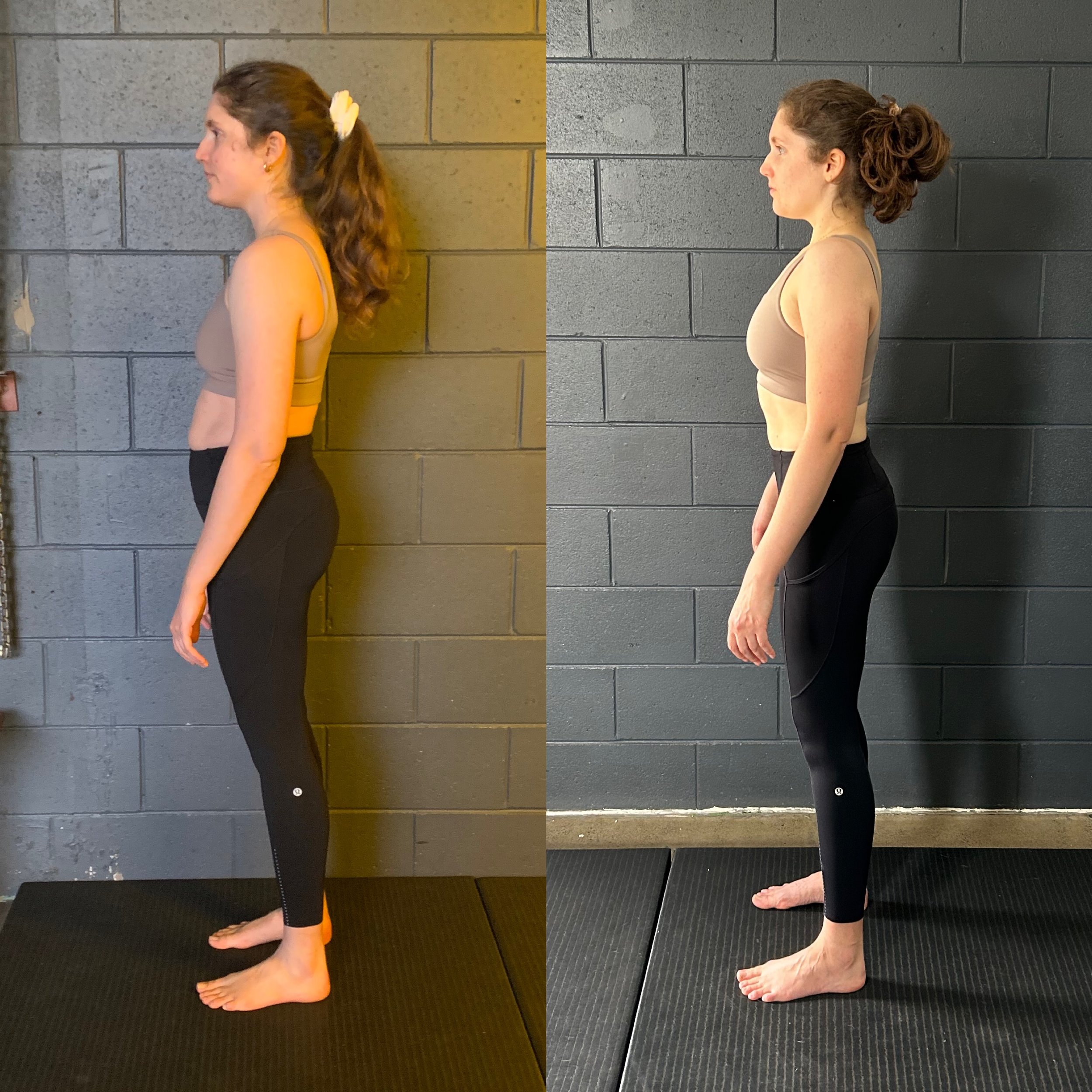How to Fix Rounded Shoulders: A Functional Patterns Approach
Rounded shoulders are a common form of bad posture. They occur when your shoulders hunch forward. This causes discomfort and health problems.
Traditional approaches focus on stretching and isolated exercises. Functional Patterns (FP) uses a different approach. FP emphasizes a holistic method, integrating myofascial release (MFR) and functional movements to fix rounded shoulders.
Understanding Rounded Shoulders
Rounded shoulders are a sign of poor posture. They happen when you sit, stand, or walk improperly for long periods.
This posture causes muscle imbalances in your chest, shoulders, and upper back. It leads to neck and shoulder pain. To correct rounded shoulders, focus on proper alignment and balanced muscle activation.
How Movement Patterns Cause Rounded Shoulders
Improper movement patterns are a major cause of rounded shoulders. When you move incorrectly, your body adapts and reinforces poor posture. For example, if you frequently sit with your shoulders rolled forward, your muscles and fascia will start to hold that position. This creates a muscle imbalance where the chest muscles become tight and the upper back muscles become weak.
Healthy shoulder positioning relies on balanced movement patterns. One key element is the rotation of the spine.
Your spine needs to rotate properly to allow your shoulders to move back into a healthy position. If your spine is stiff and doesn’t rotate, your shoulders will compensate by rolling forward. This leads to rounded shoulders and poor posture.
The Role of Spinal Compression in Poor Posture
Spinal compression is another factor that contributes to poor posture. Compression happens when your spine is under constant pressure, often due to poor movement patterns. When you sit, stand or walk incorrectly, you put uneven pressure on your spine, causing it to compress. This compression not only affects your spine but also your overall posture.
Poor movement patterns, like slouching or improper lifting, can cause spinal compression. This compression forces your spine out of its natural alignment, leading to rounded shoulders and other postural issues. To prevent spinal compression, you need to move correctly and maintain a healthy alignment of your spine and shoulders.
Myofascial Release (MFR) for Rounded Shoulders
FP recommends myofascial release instead of stretching. MFR helps release tension in the fascia, the connective tissue around your muscles.
Foam Roller MFR: Use a foam roller on your thoracic spine and chest muscles. Lie on the roller along your spine, ensuring your head and lower back are supported. Roll gently to release tension in the upper back and chest. Focus on tight areas.
Trigger Point Ball Release: Lie on your stomach. Place a small, hard ball about 3-5 cm below your collar bone. Move the ball around your chest to find tight areas.
Avoid pressing into soft tissue. When you find a tight spot, stay still and sink into the ball for 1-2 minutes. This exercise releases tension in the chest, preventing shoulders from rolling forward.
Rounded Shoulders Exercises
FP emphasises integration over isolation. Exercises should engage multiple muscle groups and promote overall body alignment. Here are the best exercise for hunched shoulders:
Core Exercises: Strengthen your core to support good posture. Planks, crunches, and transverse twists can support your spine. Make sure to extend your chest, not remain in chest flexion.
Cable Rows: Perform one-sided cable rows to strengthen your core and support posture. Without FP guidance, people often do these incorrectly.
Functional Movements: Incorporate exercises that mimic daily activities and promote proper shoulder alignment. Practice raising your arms overhead while keeping a neutral spine and shoulder posture.
Utilise Rotation: Shoulders slump because the top of your spine doesn't rotate. Using spinal rotation while training supports good posture. Get guidance from an FP practitioner to ensure correct form. Exercises for rounded shoulders should incorporate rotation.
Rounded Shoulder Exercises to Avoid:
Exercises where you squeeze your shoulder blades together.
Exercises where you hold a resistance band and stretch it out to "strengthen your shoulders"
Exercises where you pull your shoulders down. Always pull shoulders up to support shoulder positioning except in some niche cases.
Exercises where you load your spine such as squats, deadlifts and bench press
Overhead presses as they are dangerous to perform with rounded shoulders
Daily Habits to Correct Rounded Shoulders
Fixing rounded shoulders requires more than just exercises. Adopt better daily habits:
Mind Your Posture: Be mindful of your posture throughout the day. Stand up straight with shoulders slightly back and up. Avoid letting your shoulders roll forward when sitting or standing.
Work On Your Movement Patterns: Focus on how you move. Sitting doesn’t ruin posture; poor movement does. Engage your core and glutes, and rotate your spine correctly. Sitting up straight alone won't fix your shoulders.
Working with a Functional Patterns Practitioner
Consider working with a practitioner who understands FP methodology. They can assess your posture and movement patterns. They will create a customized plan to correct rounded shoulders and improve alignment, balance, strength, and coordination.
Conclusion
Fixing rounded shoulders involves more than addressing symptoms. Focus on correcting poor movement patterns. Use myofascial release, integrate functional movements, and adopt better daily habits.
Improve your posture with consistency and mindfulness. Embrace the Functional Patterns approach to unround your shoulders and enhance your well-being. well-being.


